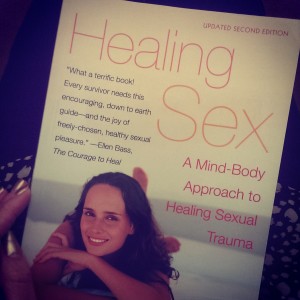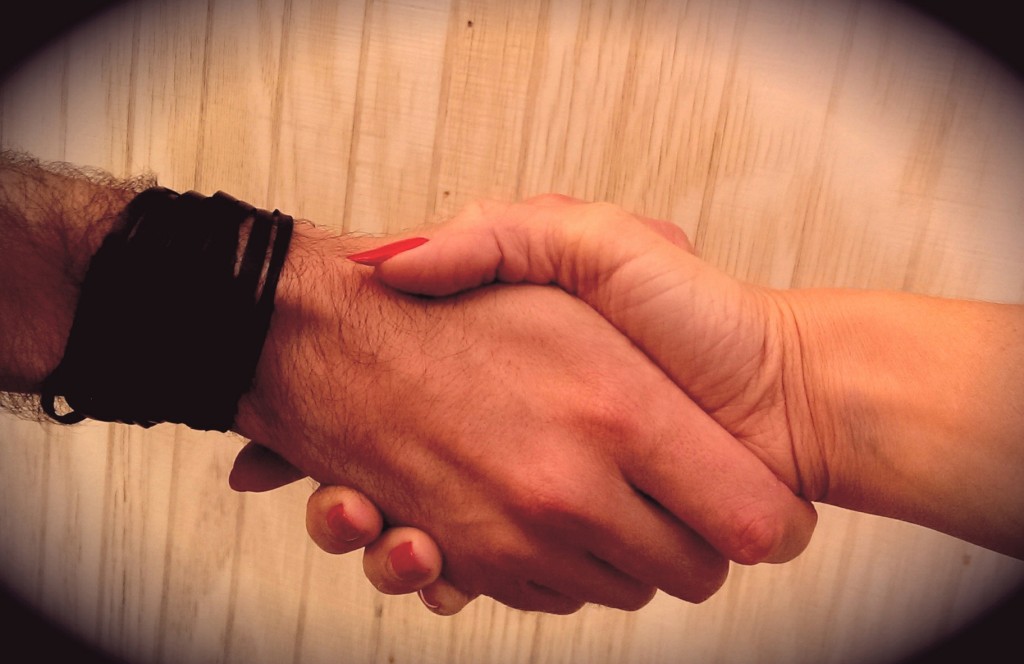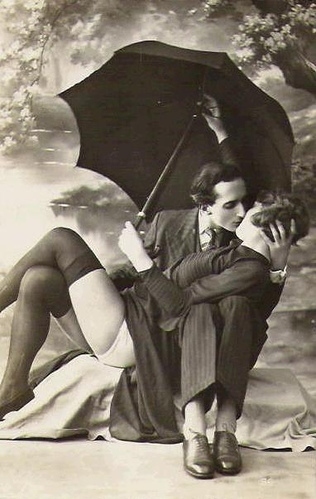Kegan Blake is the latest incredible human to participate in my interview series. I am so honored to have had the opportunity to interview him, as he’s someone that I’ve admired for many years. He is passionate about human rights and equality. And he loves trying to find the common ground- a place to build a truly solid foundation and develop lasting peace and understanding. With a Masters in Holistic Psychology with a Buddhist emphasis, and a deep understanding of trauma, sexuality and gender, he is a wealth of information and insight about the mind, body and soul of sexuality. Please join me in begging him to write a book!
You responded to my call for those who consider themselves sexual outsiders. How did you decide to identify that way?
I don’t think it was so much a process of deciding to identify as a sexual outsider as it was a process in recognizing the fact that my sexuality lies outside the normative experience. As a transman (female to male transsexual), there is a lot of curiosity about what is under my metaphorical fig leaf. There are a lot of assumptions on how I have sex and what roles I can, or cannot, perform in a sexual relationship. With that comes a few awkward and vulnerable conversations before a sexual encounter can occur. I don’t get to just pop down to the club and pick up strangers for a night of anonymous sex; well, I could but there are some very real safety considerations to consider before I do that other non-transgendered people don’t have to consider. For instance, there aren’t really reliable forms of safe sex for transmen who haven’t had lower surgery. Obviously, it is more complicated than that, based on how and with whom one wants to have sex. We can’t just go out to the store and pick up a pack of condoms. There are methods out there but I’ve never found them to be reliable. That places us at a much higher risk for STIs.
In what ways do you find this identification helpful? Unhelpful?
I think it’s helpful in that it opens doors to conversations that I might not be privy to if I were more “normative”. I am invited into discussions on different ways sexuality can be expressed and that is an incredible gift I get to receive. It deepens my understanding of sex and intimacy in ways that I think a lot of people don’t take the time to understand. Sex is both taboo and taken for granted in this society. Everyone just assumes that it is supposed to go a certain way and so people don’t really talk about it, even with their partners. I think that leads to a lot of hurt and misunderstanding in relationships. After consciously acknowledging myself as an outsider, I started to explore the sexual landscape and have found that I enjoy bondage, domination, edging, flogging, electrical stimulation, knife play, exhibitionism, multiple partners, and some other things. For some of these activities I only enjoy being the top, for others I switch roles depending on mood and partner(s).
Being a sexual outsider is unhelpful in that sometimes I get frustrated and angry that I don’t have the luxury of taking my sexuality for granted. That may sound weird to some people but there is some privilege in not having to talk about details of sex before the act or in being able to just dash over to the store to ensure your sexual safety. I’m not naturally monogamous and there are sexual situations I would like to explore which aren’t safe for me and that’s difficult to swallow sometimes. I suppose though, everyone has aspects of their sexuality that they feel frustrated with or that seem off limits to exploration whether they be self enforced repression or actual physical limitation. It is helpful to recognize that, even in my frustration, I am not alone.
I have friends who have non monogamous relationships who enjoy multiple partners and occasionally have random anonymous sexual encounters. If I were cis-gendered (according to The Oxford Dictionary: a person whose self-identity conforms with the gender that corresponds to their biological sex.), I would be able to participate in those activities more freely. Since, I am super conscientious about my health and safety and that of my partner(s) I refrain because there is no reliable protection for the configuration of my genitals and that’s frustrating.
That word “normative” is so tricky, isn’t it? It was my intention with this series to help stretch societal awareness of what constitutes healthy sexuality by bringing in folks from lesser understood parts of the spectrum. There are just so many ways to have a healthy relationship to one’s own sexuality, and I wish that children were more often taught that early on. In that regard, what advice would you give your young self in regards to sexuality?
I suppose it would be to be more open to exploration. When I was in my early adulthood I was a bit closed minded to anything other than traditional monogamous sexual relationships. That led me to serial monogamy where I would enter a relationship and break it off within a couple months because I knew from the start it wasn’t a good fit but there was sexual attraction. I think my sexual and relational experiences wouldn’t have been as painful, for anyone, if I could have opened my mind to a broader definition of relationships and sexuality.
Also, I might warn myself off of a couple dating adventures. Not that I’d listen, even to myself.
Haha. What resources might you recommend to others wanting to explore their outside-the-box sexuality?
Find a community where that kink is practiced. Sometimes, there are books and videos available for beginner education and sometimes there aren’t. Finding a community where these things are talked about and people are willing to teach beginners in a supportive and not predatory way can be invaluable. The internet is a great resource for this kind of thing. In regards to transmen, and what to expect there are websites that have pictures of genitals, FTM-centric porn, personally, I like Couch Surfers series best for that. Buck Angel is a big name FTM Porn Star but I’ve only seen one of his videos & it wasn’t for me. The point is there are a lot of ways to do some homework if people are curious about what’s under someone’s fig leaf. The only way to learn how to best please a potential lover is with that person. For very basic beginners looking for community there is are websites like FetLife, and while they’re not the best place in the world, they can lead to local groups and help people get connected to and support from the kink community. For anyone going to the internet, understand that there are predators and misinformation out there; so, use your instincts to stay safe and use the buddy system if you plan on meeting someone in real life.
I really appreciate your cautions, and your emphasis on community and connection. There are resources for just about anything, but I don’t think anything really beats the support and attunement of others.
You’ve already named several aspects of sexuality about which are educated. Are you proficient at any forms of kink?
Depends on what you mean by proficient. I wouldn’t say I’m an expert in any of the kink I practice, but my partners have always seemed to enjoy the experience we co-create. I’d have to say that bondage and knife play are the areas I am really talented in and enjoy most. The thing I’m most proficient at is after care. It’s imperative after completion of a kinky session that there is good after care, making sure that the submissive is emotionally and physically taken care of and has a safe space to process what just took place. I am really good at creating that safe space from the first conversation about a particular kink all the way through planning to processing, even days or weeks after.
Wow. The extent of your aftercare sounds incredible! I don’t think that gets talked about enough, and it’s such an important space, especially with the more intense forms of kink. Being that you’re a practitioner of psychology, I’m extra excited to ask you about what your kink meets for you.
There are a couple different things I get from kink. Foremost is intimacy and building trust. We’ve all seen those team-building programs that encourage a trust fall, where one person allows themselves to fall and trusts that the other person will catch them. Well, with bondage, domination, and knife play you have to trust each other. You also have to communicate and be really in tune with your partner. Paying attention to circulation, breathing, the person’s eyes, checking in with every new move ensuring everything you’re doing is serving your partner. A lot of people think that only the bottom is in service to the top, that couldn’t be further from the truth. The top has to be totally attuned to what is happening for the bottom and stop as soon as anything seems off. Learning someone’s body like that is intensely intimate.
The other thing I get from my kink is total surrender. In the rest of my life I tend to be in my head a lot, staying in control of myself and maneuvering situations to my best advantage. My mind is constantly taking in information and trying to fit it into a larger puzzle. So, when I’m bound or blindfolded, or both, I totally relax and give over all control. The only thing I can do is Be Perfectly in that moment. Sensing and Feeling everything that is happening. I can carry those moments into my daily life to help me remember how to be mindful and stay in this moment. It is amazing and spiritually rewarding.
That is such a beautiful description. The need to stay tuned in to your partner(s) really is essential with kinky play, and I love that you called it intensely intimate. And I love the metaphor of the trust fall! I will definitely be using that. What tips do you have particular to bondage or knife play?
Don’t be afraid to use theatrics. I have a special blade I use for knife play and it makes a really great sound when I pull it from the scabbard. If my partner is blindfolded I’ll bring the knife close to my partner’s ear and draw it so they can feel the zing and scraping of the metal on metal in their bodies. Then, I’ll lay the blade on their chest so they can feel its weight and the coldness of the metal on their skin. Also, use bait and switch. I don’t feel comfortable using my blade on genitals but I use something that simulates that feeling and my partner is none the wiser. So, they get to feel the thrill and anxiety of a sharp pointy thing on/in very sensitive areas but you know it’s perfectly safe. Engage all of the senses and it will be an amazing experience for everyone.
Do you have any fun names for things you do?
Not really a funny name for the acts themselves but my partner and I often call explorations “Science.” So, we often “sacrifice” in the name of “science” when we try a new thing.
Ah, that’s delightful! I do like to use the word “experiment” a lot in therapy, as that is so often what we’re up to: trying something out and studying it! Are there things you haven’t tried yet that you might like to get into?
Oh, for sure. I think the next thing I’ll try is Japanese style knot bondage. It is gorgeous and intricate. I’m fascinated by abduction fantasies & consensual non-consent but, I don’t know if I’ll ever have the courage to try it. It just seems too dark and potentially psychologically dangerous.
Oh those knots are so beautifully intricate! I definitely understand your hesitation with the consensual non-consent play. It simply is riskier to concretize it.From where do you draw strength and support for doing what you do?
I don’t know about strength, in regards to my transness, it really came down to not being able to continue living the life I had lived; something had to change or I’d die. In both things, my transness and the kink, support comes from my partner, some of my more open minded friends, and online community.
I hear that so often from my clients who are trans- that it’s essentially choosing life or death. I’m so glad that you chose to make a change, and that you have support. I look forward to a world where transitioning is more fully understood and supported, so that it’s simply a logical next step.
You’ve already shared so much awesomeness; is there anything about which you’d like to spread awareness?
I think there is a misconception that transmen don’t have “real” penises unless they get bottom surgery. That isn’t true. On Testosterone, transmen can get between about 2 – 4 inches of flaccid length. Girth also changes with Testosterone. So, when erect, transmale cock performs in the same way that a cis-gendered penis works, with the exception of sperm production and peeing through our cocks. We can pee standing up using a variety of tools, techniques or through surgically re-routing and lengthening the urethra. Maybe somewhere in the future, science will figure out how to help us produce sperm but, for now, that’s all sci-fi.
My hope is that, with education and communication, someone will innovate a way to protect transmen from STIs more reliably.Currently, the methods most often used are either cellophane or cutting a latex/vinyl glove and fitting it to our genitals. For some guys that works fine and for others not so much. In my experience, cellophane doesn’t work for penetrative sex acts; yes, some transmen can penetrate their partners with their biological cocks. And modifying a latex glove isn’t effective because the glove continues to tear and doesn’t really stay in place. It’s possible that I’m not doing it right but there isn’t really anywhere to learn how either. It’s all trial and error for each of us. There has to be a better way.
I’m really glad that you brought that up. I’m realizing that there is often very little talk or even educational resources about penises grown through the use of testosterone, and that probably perpetuates a lot of fear and myths! And there’s undoubtedly a need for more research funding for condoms. Science (the kind done in labs rather than your bedroom) has given us so much incredible technology, and frankly, a condom for transmen seems only moderately challenging.
Kegan, with your background and experience, I’m thrilled to know that you’re part of this community, and that you’re so dedicated to change. We are so lucky to have you! Thank you very much for granting me this interview. I’m so proud to count you amongst my colleagues.



